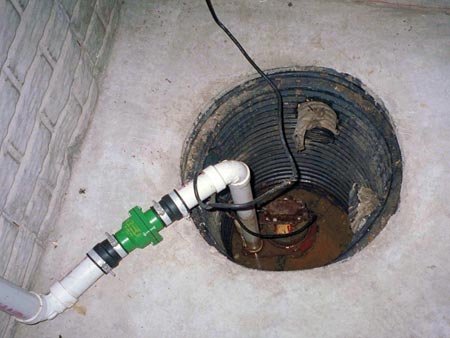Sump pumps are a popular device used to forcefully pump water out of a basement. This excess water, be it the result of a  particularly bad rainstorm or just general underground wetness, is a serious issue for any home. Sump pumps are electrical devices that “kick in” when water is close to, or actually does, enter a basement and needs to be removed. Basement sump pumps are considered a must-have by many homeowners, with some having multiple pumps in the same home. They are often installed in specially constructed sump pits in the lowest part of a basement or crawl space and are there explicitly keep ground below the house dry so the water doesn’t get into the house. While sump pumps are considered an essential part of many homes, especially those with basements, they are not without their challenges. If you’re thinking about getting a basement drain pump in your house, here are some positives and negatives to consider when making your choice.
particularly bad rainstorm or just general underground wetness, is a serious issue for any home. Sump pumps are electrical devices that “kick in” when water is close to, or actually does, enter a basement and needs to be removed. Basement sump pumps are considered a must-have by many homeowners, with some having multiple pumps in the same home. They are often installed in specially constructed sump pits in the lowest part of a basement or crawl space and are there explicitly keep ground below the house dry so the water doesn’t get into the house. While sump pumps are considered an essential part of many homes, especially those with basements, they are not without their challenges. If you’re thinking about getting a basement drain pump in your house, here are some positives and negatives to consider when making your choice.
PRO
- Removes water from basement. Water can get into a basement from numerous different sources and sump pumps work to force that water outside the home before it can do any damage inside. Sump pumps can drain a basement after it has flooded or even pump water from the earth beneath the house before it gets a chance to enter the basement to begin with.
- Works better than external waterproofing coatings. Some homeowners think external waterproofing coatings are enough to completely protect their homes from outside water and stop flood prevention there. These coatings often break, crack, and weaken, eventually leading to flooding. When this happens, many homeowners find themselves with a flooded basement and no way to get the water out.
- A sump pump is an active system. External waterproof coatings, drains, or tiles are passive systems that attempt to stop basement flooding either by simply being present or by responding AFTER flooding has already happened. A house with a sump pump actively works to prevent water from getting into the basement in the first place by pumping ground water away from the home before it can get in through cracks or holes.
CONS
- Sump pumps require electricity. A sump pump being an active system means that it requires electricity whenever it “kicks in” (turns on) to pump water away from the home. Under normal conditions this is no issue, but in situations where larger rainstorms also lead to power outages, you could still find yourself with a flooded basement. It is recommended if you do get a sump pump, to get one that has a battery back up and is properly sealed to prevent flood water from damaging the pump itself.
- Radon risk. A sump pump system requires a sump pit to be dug, which creates an opening in the earth beneath your home where Radon can come through. If Radon is an issue in your home, be aware that virtually any hole in the foundation can be an opening for Radon to get into your house.
- While the cost of maintaining a sump pump is low in most situations, you must also consider the overall cost of your decision. Sump pumps are relatively inexpensive on their own (prices vary depending on model and motor “horse power”), but when combined with all the other types of waterproofing that many homes have as well, the price can really add up. Many homes do not have just one type of waterproofing. While sump pumps are active systems that prevent water from entering a home from underneath, a waterproof coating is also needed to keep water entering through the walls, and then drainage systems that the sump pumps themselves feed into. As many houses have combined systems to waterproof their basements and crawlspaces, they also show a combined price tag.
The SANI-TRED Alternative
Another way to deal with flooding is…don’t deal with flooding. SANI-TRED waterproofing products don’t just TRY and prevent flooding, it does it. Sump pumps use electricity and piping to try and keep a basement waterproof, but under extreme circumstances, even they are known to fail. SANI-TRED, in a simple application, completely waterproofs your basement better than any external coating, drain, or sump pump can manage. SANI-TRED permeates your basement walls and floor, seals them permanently, and stops water from entering your house. No pumps, no drains, no need for a backup plan, just a waterproof solution that works.

Thank you for all this great information about choosing a sump pump! One thing that I really like is that they can actually work better than external waterproofing. Since we don’t have either of these, it would be nice to have this installed.